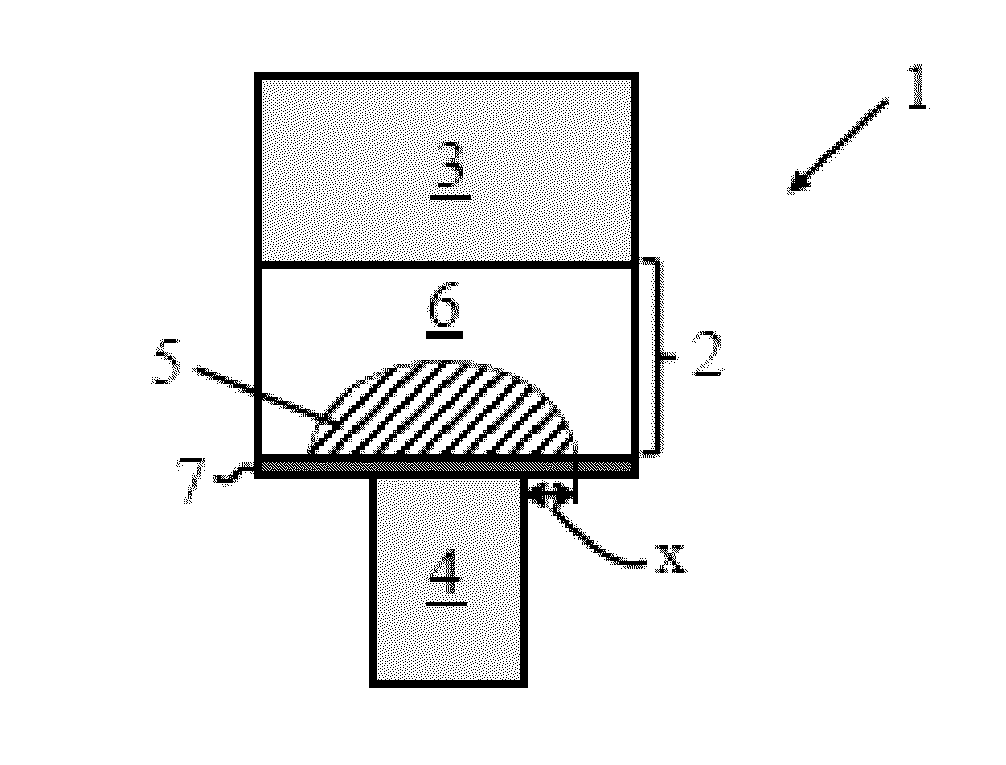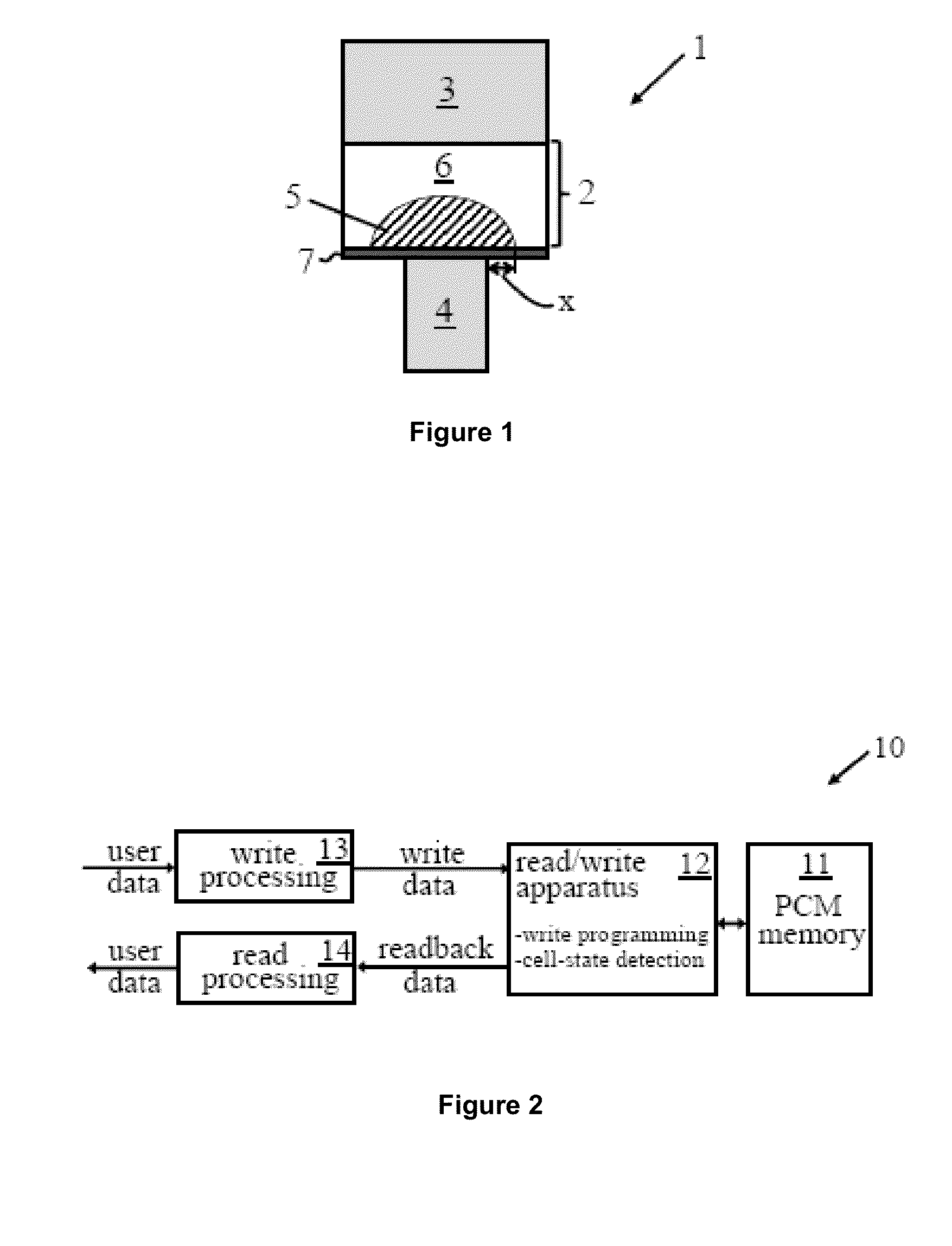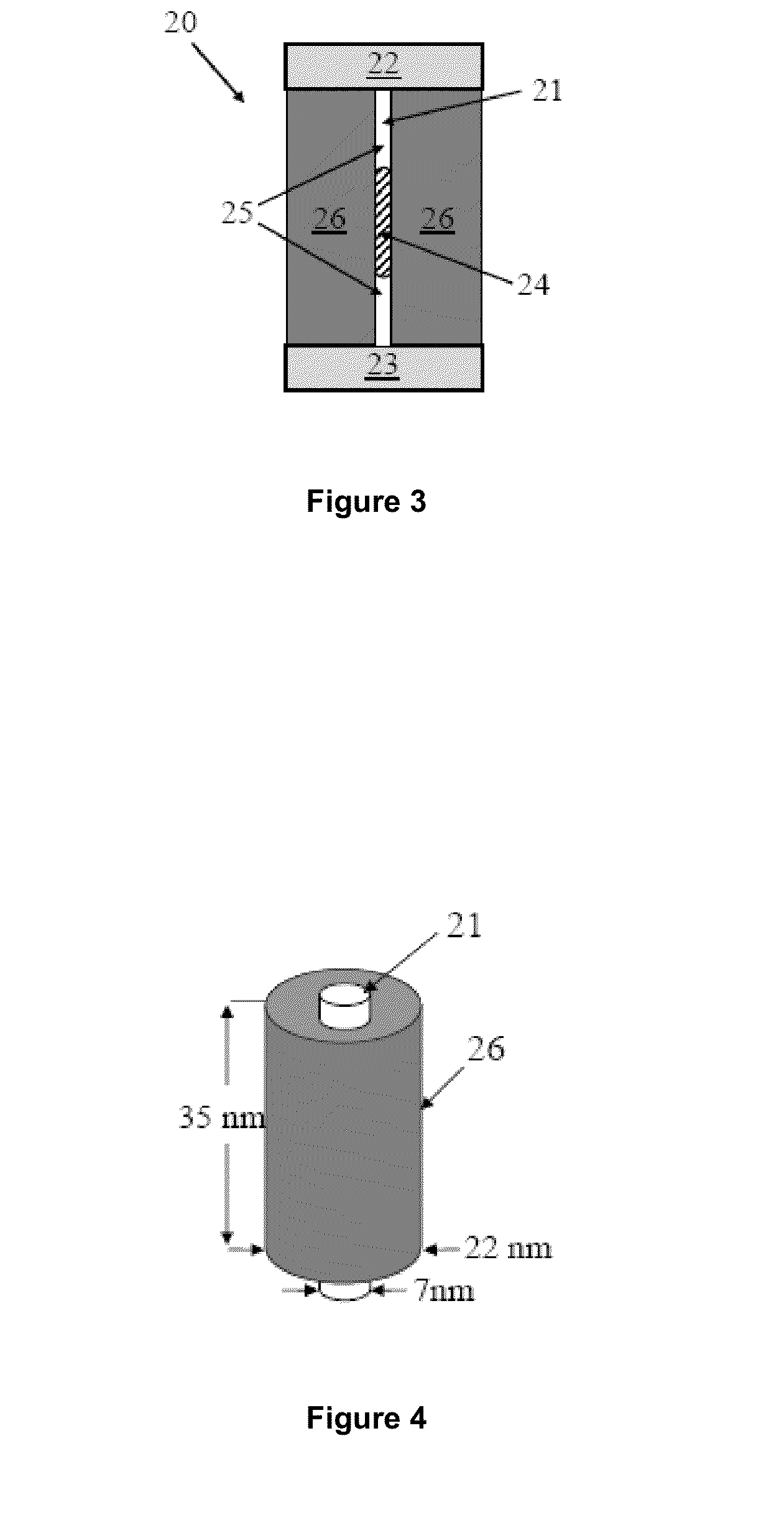Phase-change memory cells
a memory cell and phase-change technology, applied in the field of phase-change memory cells, can solve the problems of destroying information, amorphous phase resistance exhibits undesirable attributes, and complicates the read out of stored information
- Summary
- Abstract
- Description
- Claims
- Application Information
AI Technical Summary
Benefits of technology
Problems solved by technology
Method used
Image
Examples
Embodiment Construction
[0035]FIG. 2 is a simplified schematic of a phase-change memory device, according to an embodiment of the present invention. Device 10 includes multilevel phase-change memory 11 for storing data in one or more integrated arrays of PCM cells described below. Reading and writing of data to memory 11 is performed by a read / write controller 12. Controller 12 includes circuitry of generally known form for programming PCM cells during data write operations and making read measurements for detecting cell-state during data read operations. During these operations, the read / write controller can address individual PCM cells by applying appropriate control signals to an array of word and bit lines in memory ensemble 11. As indicated by block 13 in the figure, user data input to device 10 is typically subjected to some form of write-processing, such as coding for error-correction purposes, before being supplied as write data to controller 12. Similarly, readback data output by controller 12 is ...
PUM
 Login to View More
Login to View More Abstract
Description
Claims
Application Information
 Login to View More
Login to View More - R&D
- Intellectual Property
- Life Sciences
- Materials
- Tech Scout
- Unparalleled Data Quality
- Higher Quality Content
- 60% Fewer Hallucinations
Browse by: Latest US Patents, China's latest patents, Technical Efficacy Thesaurus, Application Domain, Technology Topic, Popular Technical Reports.
© 2025 PatSnap. All rights reserved.Legal|Privacy policy|Modern Slavery Act Transparency Statement|Sitemap|About US| Contact US: help@patsnap.com



